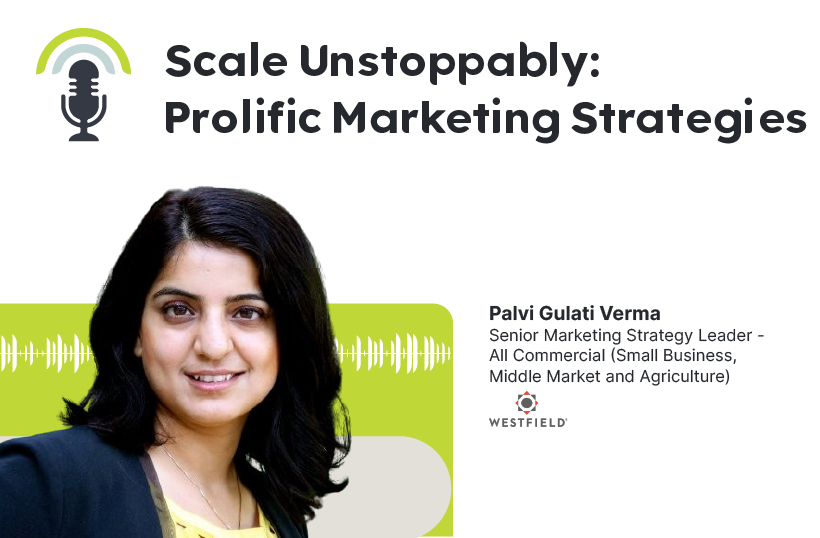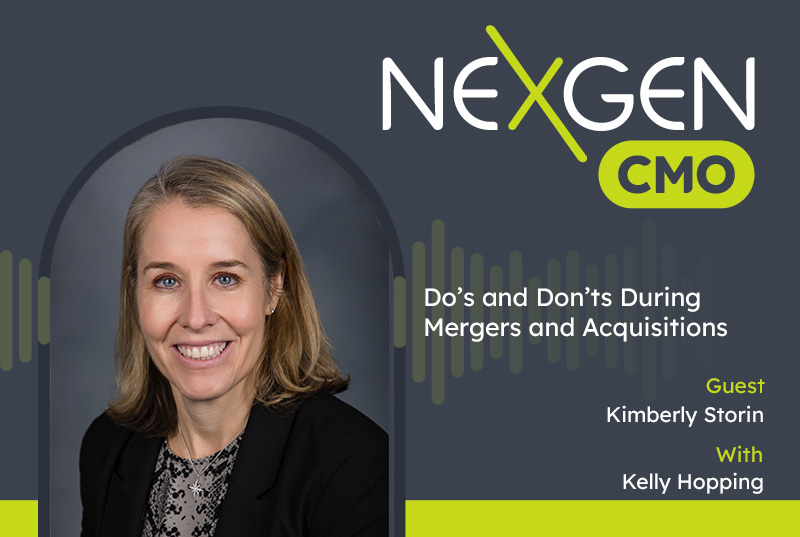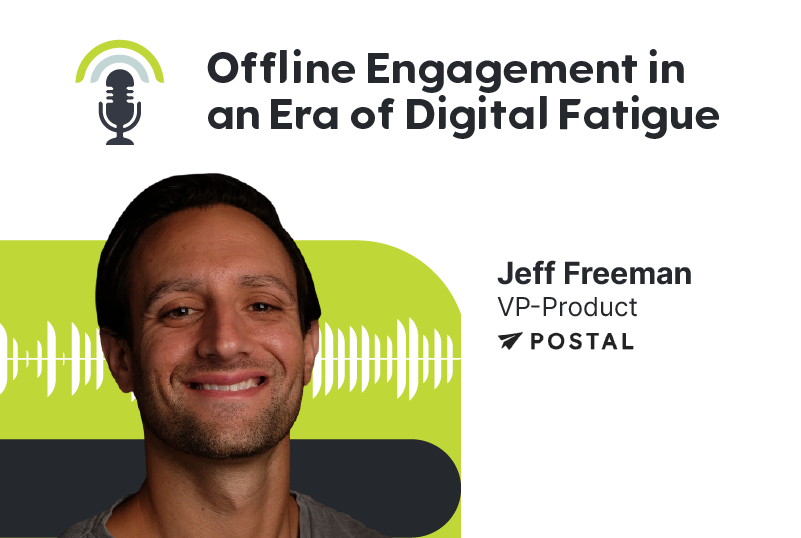
Frameworks for Super Successful Marketing Strategies and Campaigns
Shownotes
In this episode of Sunnyside Up, host Joe Delamere interviews Palvi Verma, a marketing strategist with a distinguished career in financial services. Palvi shares her insights on the best practices for establishing successful Account-Based Marketing (ABM) strategies for organizations. She emphasizes the significance of obtaining internal consensus and undertaking thorough preparations, as well as the importance of comprehending customer perspectives and fostering a sense of urgency. Additionally, she offers valuable perspectives on the challenges organizations face when implementing partner models for sales. Moreover, Palvi discusses a highly acclaimed marketing framework that she employed, resulting in remarkable revenue growth from seven to 21 million within a single year. She delineates a comprehensive five-part process for effective marketing initiatives, encompassing the definition of an ideal customer profile, understanding the customer’s worldview, identifying their needs, evaluating competitors, and devising a strategy accordingly. Lastly, Palvi elucidates how the art of storytelling and the use of visualization techniques can be instrumental in gaining the support and approval of stakeholders.
About the Guest
With a distinguished career spanning over a decade and a half, Palvi Verma has earned a reputation as a dynamic and visionary Marketing Strategist. Honing her skills with prestigious firms such as Goldman Sachs, JP Morgan, and Accenture, she has meticulously crafted her role within the financial services industry. She currently serves as the Marketing Strategy Leader at Westfield, a fast-growing international insurance company, where she continues to demonstrate her marketing acumen.
Key Takeaways
- 3 key elements for successful B2B ABM practices: internal buy-in, understanding customer worldview, and creating urgency.
- Challenges faced when selling through a partner model include having multiple partners and ensuring they are all on the same page.
- Ensuring that new employees get trained properly and keeping a tight eye on new employee training programs at partner agencies
- Making sure partners understand how the brand is different from competitors without just throwing money at them
- Adopting marketing strategies to maintain a competitive edge in a resource-constrained world
- Internal buy-in and preparation are crucial for successful B2B ABM practices.
- Understanding the worldview of customers is essential in developing effective marketing strategies.
- ABM’s success relies on focusing on key accounts and not constantly adding new ones.
- B2B organizations selling through partner models face challenges in ensuring consistent brand messaging and differentiation.
- Building strong partnerships requires training and aligning partner employees with the brand story.
- Maintaining a competitive edge in a resource-constrained world involves strategic channel selection rather than being present on every channel.
- Identifying underutilized channels can provide a competitive advantage and drive growth.
- Balancing creative thinking with analytical decision-making helps optimize marketing efforts within resource constraints.
- Timing plays a crucial role in gaining buy-in for new initiatives within an organization.
- Building a coalition of champions fosters collaborative decision-making and support for new strategies.
Quote
“You understand that art of standing out, understanding your brand story, and making sure there’s a fit there.”
– Palvi Verma
Highlights from the Episode
Can you share your experience and insights on setting up successful B2B ABM practices for organizations?
Palvi emphasized that successful B2B ABM practices require three key elements. Firstly, internal buy-in and thorough preparation are crucial, involving key stakeholders from sales and marketing. It is important to gain their support and ensure they are comfortable with the associated costs. Secondly, understanding the worldview of customers and target organizations is essential to avoid ABM failures. This understanding helps in tailoring the approach and messaging to resonate with their needs and preferences. Lastly, Palvi highlighted the significance of recognizing the listening and silence journey of the sales team. Creating urgency in the sales process is essential to close deals effectively. By focusing on these aspects, organizations can establish successful ABM practices and drive business growth.
Are there any challenges faced by organizations when selling through a partner model, and do you have any examples?
Palvi mentioned two major challenges faced by organizations when selling through a partner model. Firstly, ensuring proper training for new employees at partner agencies is crucial. This ensures that they understand the brand story, value proposition, and differentiation from competitors. Proper training helps in maintaining consistency and effectively conveying the company’s message to end users. Secondly, dealing with partners selling both the company’s product and competitors’ products presents a challenge. It is important to implement strategies that differentiate the company’s offerings and help partners understand the unique value they provide. By addressing these challenges, organizations can optimize their partner model and enhance sales outcomes.
What marketing strategies can companies adopt to maintain a competitive edge in a seemingly ever more resource-constrained world?
Palvi acknowledges that resource constraints are a reality for every company. Many organizations try to be present on every channel, imitating their competitors and diluting their efforts. Palvi believes that the key to maintaining a competitive edge is to recognize the resource constraints and focus on identifying the most optimal channels and positioning. She emphasizes the importance of finding underutilized channels and channel strategies to stand out in a crowded market.
Is there some sort of an adoptive framework that companies can use to implement these strategies effectively?”
Palvi explains that her methodology for achieving revenue growth involves a five-part process. It starts with understanding the ideal customer profile and their needs, aligning the company’s offering and positioning with the customers’ worldview. Competitor analysis is also crucial to identify areas for improvement. Palvi emphasizes the importance of considering underutilized channels and selecting the most optimal strategy based on resources and analytical evaluation. She mentions that her framework is still being developed but aims to provide a cohesive and easily understandable format.
Do you have strategies for gaining buy-in and navigating the decision-making process when implementing new initiatives within a large organization?
Palvi mentioned three key strategies for gaining buy-in and navigating the decision-making process within a large organization. The first strategy is understanding the timing within the organization. It’s important to consider if it’s the right time for the organization to focus on growth or if other priorities might hinder buy-in. The second strategy is building a coalition of champions, where teamwork and collaboration are emphasized. By aligning marketing and sales teams tightly, the strategy becomes a collective effort rather than an individual one. Palvi spends a significant amount of time on this strategy. Lastly, Palvi emphasizes the importance of storytelling and visualization. While data is crucial, it’s essential to use data to tell a compelling story that excites others and helps them envision the benefits of the initiative. By focusing on these strategies, Palvi aims to increase buy-in and successfully implement new initiatives within the organization.
Is there a book, blog, newsletter, website, or video that you would recommend to our listeners?
Shout-outs
Darryl Siryl – Chief Technology Officer at SiriusPoint
Lakshmi Reddy – Venture Partner at Sybilla Masters Fund




